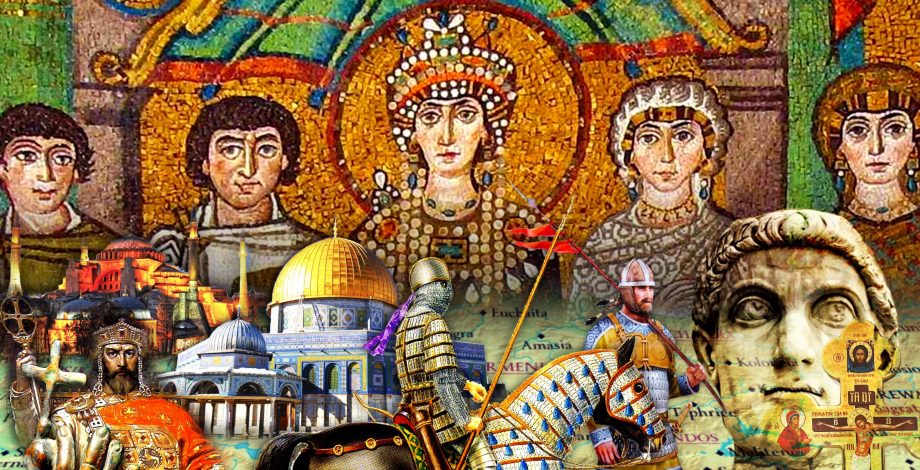The General Logothete Nicephorus becomes Emperor and embarks on a wide ranging programme of reform. In this episode we focus on relations with the Caliphate, Charlemagne and the clergy.
Period: 802-811
Download: Woulda
RSS Feed: The History of Byzantium
If you want to send in feedback to the podcast:
– Either comment on this post.
– Or on the facebook page.
– Leave a review on Itunes.
– Follow me on Twitter.


It’s thrilling to be returning to the narrative again. Keep up the good work!
Why does the coin use Latin letters to spell Nicepheros’s name? (C and F) In other renderings the emperor’s name is written wholly in Greek letters.
Good question and I don’t know. Numismatics is not my area. Is it possible these were minted in Sicily or Italy? Seems unlikely as Greek was widely used there. Can you post examples online with the Greek spelling?
Greek was probably the main language in coastal areas of Southern Italy and Sicily from pre-Roman time ( 5-6th century BC) up to 11-12th century (after Norman conquest). There are Greek communities in the area up to 20th century. And these were areas under continuos Byzantine rule form Justinian down to Norman conquest 500 years later.
The emperor’s name in Greek is “Νικηφόρος”, meaning “he who bares/brings victory”. Victory in Greek is “Νίκη”. The Greek letter “κ” (kapa) is writen in Latin either with “k” or “c”. Examples are the French city Nice, which in Greek is “Νίκαια” (Nikea), or the athletics brand Nike, “Νίκη” in Greek. The letter F comes from the ancient Greek alphabet, was called “Δίγαμα” (Digama) and was later used in Latin to pronounce the letter “φ” (ph), as in the word Philadelphia.
Robin, this is amazing work that you are doing with this podcast. Your way of storytelling is one of a kind, particularly when you express your opinion where you have the facts to support it and when you take distance from a verdict when the historical evidence is poor. Thank you.
You said that you provided link to script of Hose of War.
unfortunately I can’t find it. Could you repeat it?